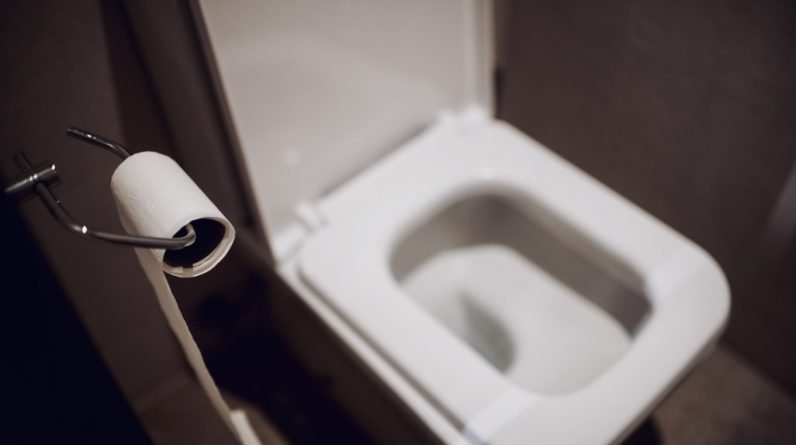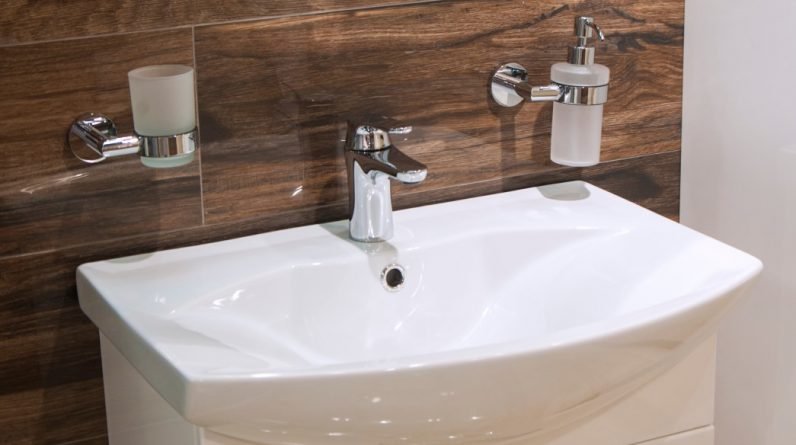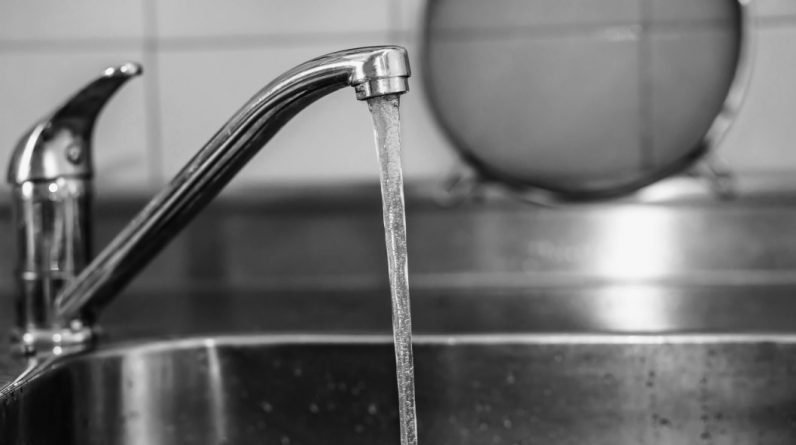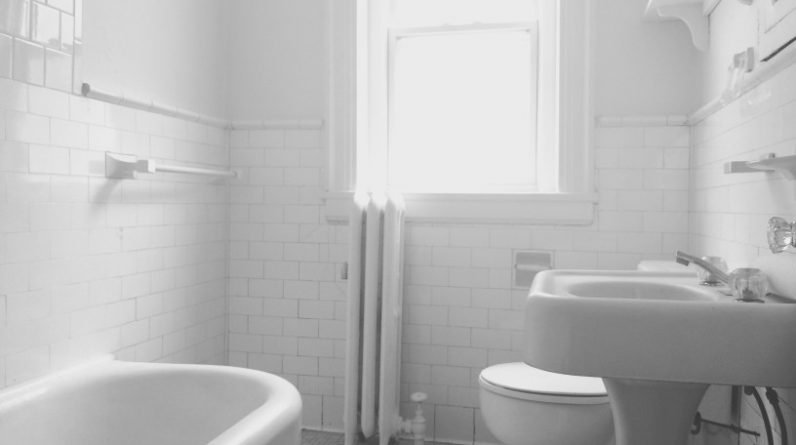
10 Toilet Problems and Quick Fix
Toilets are a necessary part of life. But when they start to malfunction, it can be a nightmare! From clogs and leaks, to running toilets and rattles–there’s no shortage of issues that can arise with them. It’s important to know how to identify these problems quickly so you can fix them before they cause major damage or inconvenience. Let us take a look at the most common types of toilet problems and some easy solutions for each one.
Malfunctioning toilets often require more than just plungers and liquid drain cleaners. The problem could actually lie in your water supply line, tank components or even the flushing mechanism itself. No matter what type of issue you’re dealing with, the best way to tackle it is by understanding the source. In this article we’ll discuss some of the most common toilet troubleshooting tips and quick fixes that will help get your loo up and running again in no time.
Whether you need to unclog a stubborn blockage or simply want some advice on how to maintain your toilet properly – our guide has everything you need! We’ll also give you an overview of basic plumbing tools and techniques so you have all the information needed to solve any future issues yourself. So let’s dive right into it – read on for helpful tips on fixing various types of toilet problems!
## 1. Clogged Toilet
Clogged toilets are a common problem in the home. Water stops flowing down, and instead pools around the rim of the bowl. This can be extremely frustrating when you need to use it – but fortunately there is an easy fix. Firstly, by using a plunger you can push air through the pipes and clear any blockages that may have formed along them. Secondly, try pouring boiling hot water into the bowl to help dissolve whatever has become lodged in your drains. Lastly, if all else fails chemical cleaners or drain snakes can be used to dislodge stubborn clogs from difficult-to-reach places. These tools should only be used as a last resort however, as they could potentially cause damage to the pipes themselves. In short: assess what’s causing the issue, then take action accordingly with either a plunger or hotter water – if these do not work look for professional assistance.
## 2. Weak Toilet Flush
Weak toilet flush. A common problem that no one wants to confront. It can be a real hassle, especially when it happens unexpectedly. Thankfully, there are some simple fixes you can try before calling the plumber.
First, check if the flapper valve is closing properly and adjust as needed. If it’s not sealing properly or has become too worn out, replace it with a new part. Another solution could be making sure the water level in your tank is at an appropriate level – usually around halfway up the overflow pipe. Lastly, inspect the lift chain to make sure it’s connected securely and free from any kinks or tangles that may prevent the lever from lifting sufficiently.
If these solutions don’t seem to do the trick then you’ll need to call a professional for further help. In this case, it’s likely due to clogs further down into your plumbing system like tree roots or mineral buildup which require more specialized tools and knowledge than most people have access to on their own.
No matter what kind of issue you’re facing with your toilet, knowing how to diagnose and troubleshoot basic problems can save yourself time and money in the long run by avoiding expensive calls for repairs or replacements.
## 3. Running Toilet
Running toilets can be a nuisance. Water bills can spike due to the extra water usage, and it’s annoying to have to listen to the sound of running water all day long. Fortunately, there are several easy fixes that you can try before calling in a plumber.
First, check for any visible leaks around the toilet base or tank. If you see one, tighten the bolts until they stop leaking. If this doesn’t work, then try replacing the flapper valve inside the tank- it may be worn out from years of use. Another possible fix is adjusting the float ball so that it isn’t too low, which could cause the toilet to keep refilling itself with water unnecessarily.
Finally, if none of these solutions works for you, then your best bet is probably to call in a professional who will know exactly what needs to be done in order to solve your issue quickly and effectively. It might cost more upfront but it’ll save time and money in the long run as opposed trying DIY methods only to find that they don’t work!
## 4. Loose Toilet Handle
Loose toilet handles are a common problem, but can be easily fixed. To start off the repair process, you’ll need to find out what kind of handle your toilet has. It could either be a side-mounted or a top-mounted lever. Both require different approaches when fixing them.
For side mounted levers, begin by loosening the nut that holds it in place, then adjust its position before tightening the nut again. You may want to also check if there’s any corrosion on the nuts and bolts so they don’t become too rusty or loose over time. Top-mounted levers usually have a plastic clip which needs to be removed first before adjusting the handle itself. Be sure to tighten all screws after setting everything back into place for optimal performance.
Finally, test the flush mechanism once more to make sure it is working properly – this will help prevent further issues from occurring down the line. If needed, replace worn out parts with new ones and lubricate any moving pieces such as hinges for smoother operation. With these simple steps, you should now have a fully functional toilet handle!
## 5. Uneven Water Level In Tank
The fifth type of toilet problem is an uneven water level in the tank. This can be caused by a few different issues, such as a faulty fill valve or a worn flapper. The water levels should remain consistent between flushes, so if one flush has more water than another, it’s time to take action.
First step: check the float arm and make sure that it isn’t set too low or high. If it looks out of place, you can adjust it with a pair of needle-nose pliers until the water level is where you want it. If this doesn’t fix the issue, then you may need to replace the fill valve completely.
Second step: test your flapper for leaks. All you have to do is remove the lid from the tank and drop some food coloring into the toilet bowl – if within 10 minutes any color shows up in the bowl, there’s probably a leak somewhere in your flapper chain seal! In this case, replacing the entire assembly would be a good idea.
Third step: Check all other components like gaskets and bolts for signs of wear and tear. Even small cracks or gaps can cause big problems when it comes to maintaining proper water levels. Replacing them regularly will go a long way towards ensuring that your toilet stays running smoothly for years to come!
Keeping these tips in mind will help ensure that you’re able to identify and quickly resolve any issues related to an uneven water level in your toilet tank before they become bigger problems down the line.
## 6. Toilet Won’t Stop Flushing
Problem six: Toilet won’t stop flushing. This issue is often caused by a faulty fill valve and can be frustrating for homeowners. The first step to fixing this problem is diagnosing the cause of the issue: either the float, overflow tube or refill tube are malfunctioning.
If it’s the internal float that’s causing problems, you’ll need to replace it with an adjustable one-piece ballcock unit. If necessary, adjust the arm so that it stops filling at the pre-determined level when water rises in the tank. Then check if there’s any debris blocking the refill tube—this could also be preventing your toilet from shutting off properly when flushed. Clean out anything that may be clogging up this pipe–a vacuum cleaner will do nicely!
If neither of these solutions work, then chances are you have a worn out flush valve seal; replacement should fix this issue right away. Simply unscrew the old seal, take note of its size and shape before purchasing a new one, and screw on correctly. With proper diagnosis and maintenance, your toilet will soon be back in working order again!
## 7. Toilet Tank Filling Slowly
Sometimes a toilet tank can fill up slowly, leaving you with an annoying and inconvenient wait for the water to fill back up after every flush. This issue is usually caused by a slow leak in either the float valve or fill valve, both of which are responsible for refilling your toilet tank. It’s important to determine what part of the system is causing the problem before attempting any repairs.
To troubleshoot this issue, start by checking that there is no visible damage on either the float or fill valves. If everything looks okay visually, it may be time to check inside each valve separately. The most likely cause of a slow filling toilet tank is a clog somewhere in the pipe leading into the tank, so if you find anything blocking the flow of water then removing it should solve your problem right away.
If there doesn’t appear to be any blockages, then try adjusting the height of each valve until you find one that allows for proper refill speeds without overflowing. You’ll need to turn off both valves and make sure they are completely dry before making adjustments; otherwise you could end up damaging them further and needing to replace them entirely. Once everything has been adjusted correctly, re-open the valves and test out your new settings! With some patience and careful attention to detail, fixing a slow filling toilet tank will be easy as pie!
## 8. Leaking Toilet
Leaking toilets can be a real nuisance. If you notice water on the floor around your toilet, then this is likely due to a leak in either the tank or bowl of your toilet. It’s important to identify and fix the cause of the leak as soon as possible, before it leads to more serious damage.
First, check for any visible cracks or other signs of damage in both the bowl and tank that could be causing the issue. If there are no obvious issues with these components, you’ll need to inspect all connections – from where supply lines attach at the bottom of the tank, through to bolts and gaskets holding everything together inside the tank itself. Tightening loose screws may solve some problems; if not, replacing worn-out parts like valves and flappers should do the trick.
Replacing toilet seals is also an inexpensive way to stop leaks quickly. Make sure you use high quality material when doing so; otherwise they won’t last long enough and you’ll end up having to repeat repairs sooner than necessary. As always, it pays off to take time when inspecting each part carefully so that you don’t miss something critical that could lead to major headaches later down the line!
If done correctly, fixing a leaking toilet doesn’t have to cost much money or time. A little preventive maintenance goes a long way towards saving you big bucks further down the road!
## 9. Toilet Making Loud Noises
Noise from a toilet can be unpleasant and worrying. It may indicate a problem with the unit, or even an issue with water pressure in the building’s pipes. To determine the source of this loud noise, we need to investigate further.
First off, check for any visible signs of damage on the exterior of the toilet bowl or cistern. If there are none present, then you should move onto inspecting the internal components of your toilet. Look at all moving parts such as flush valves, fill valves and flaps; these are common sources of noise when they become worn out over time. Additionally, sediment buildup within the tank can cause rattling noises when it is disturbed during flushing cycles.
The best way to fix noisy toilets is by replacing faulty components or cleaning out debris that has settled inside them. This process requires some basic plumbing knowledge but can usually be done without professional help if you have access to the right tools and materials. Before attempting any repairs yourself however, make sure to read through manufacturer instructions carefully so that you don’t end up causing more damage than before!
In short, diagnosing and fixing a noisy toilet involves finding out what component is responsible for making those sounds, then either repairing or replacing it depending on its condition. Taking into account safety precautions and following manufacturer guidelines will ensure that your toilet remains quiet once again!
## 10. Toilet Not Flushing At All
The tenth problem is one that’s frustrating to deal with – a toilet not flushing at all. Usually the issue is either something blocking the drain or an airlock in the pipes. In cases of blockage, it may be necessary to remove and inspect your toilet tank for any debris that has been caught there. It could also be due to some sort of clog lower down in the pipe system, so checking further can help you identify if this is the case.
If neither of these are causing a lack of flush, then there might be an airlock developing somewhere in your plumbing. This happens when water becomes trapped between two sections of pipe, preventing any from entering into the bowl itself. To fix this, try turning off your water supply before using a plunger on the affected area until you hear a gurgling sound indicating that air has been released and normal flow resumed.
In such instances, it’s best to call a plumber as soon as possible who will be able to diagnose and repair whatever underlying cause lies beneath. Not only will they get your toilet working again but also ensure that no future problems arise from its use. Taking preventative measures now can save time and money later on while keeping everyone safe in their own home environment.
Frequently Asked Questions
## What Type Of Toilet Is Best For My Bathroom?
Choosing the right toilet for your bathroom is an important decision. The type of toilet you choose can have a big impact on how comfortable and functional it is, as well as the overall look of the room. To make sure you find the best option for your home, there are some key factors to consider.
When selecting a new toilet, start by thinking about its size and shape. You’ll need to measure your space carefully before making a purchase. Consider if you want a one- or two-piece design, which will also affect how much space is needed around the unit. Additionally, keep in mind whether water efficiency and noise levels are important considerations for you; these features vary from model to model.
Lastly, take into account what style fits best with your decorating plan. Whether that’s modern or classic lines, traditional curves or contemporary angles – there’s something to suit every taste out there! Be sure to think through all of your choices thoroughly so that once installed, you enjoy years of satisfaction with your new loo.
## How Often Should I Replace My Toilet?
Replacing a toilet can be an expensive job. But it is necessary to do so in order to keep the bathroom functioning properly and efficiently. How often you should replace your toilet depends on several factors, such as its age, condition, and usage frequency.
Age is usually the biggest factor when deciding how often to replace a toilet. Generally speaking, toilets last up to 10 years with proper maintenance and care. If your toilet is older than that or if it’s starting to show signs of wear and tear like cracks or leaks, then it may be time for a replacement.
Usage frequency also plays into how frequently you need to replace your toilet. A family of five will likely have more frequent usage than a single occupant household, which means they’ll need to replace their toilet more often than those with less occupants. Additionally, hard water or heavy mineral deposits can cause damage over time and require more regular replacements.
To ensure your bathroom stays in good shape, inspect your toilet regularly for any potential issues and plan ahead by replacing it before major problems occur. Regular upkeep can help extend the life of your toilet while preventing costly repairs down the line.
## What Type Of Toilet Bowl Cleaner Should I Use?
Using a proper toilet bowl cleaner instead of harsh chemicals is key to keeping your toilet in good condition. It’s important to know what type of cleaner to use, as some cleaners can cause damage over time if used incorrectly.
When it comes to cleaning the inside of the toilet bowl, there are several types of cleaners available. For instance, bleach-based cleaners are effective at killing germs and bacteria but may be too harsh for porcelain surfaces. Natural products such as vinegar or baking soda also work well on toilets and don’t contain any dangerous chemicals. Alternatively, you could opt for an enzymatic cleaner which breaks down organic matter like urine and feces without damaging the surface of the bowl.
It’s best to avoid using abrasive scrubbers when cleaning the interior of your toilet bowl because they can scratch and damage its delicate surface. Instead, look for non-abrasive brushes that won’t leave scratches or damage the material beneath them. Additionally, make sure to read all instructions before using any cleaner so that you understand how long you should let it sit before rinsing off with water. This will help ensure that you’re getting maximum effectiveness out of your chosen product while avoiding potential damages caused by improper use.
No matter what type of cleaner you choose, regular maintenance is essential for keeping your toilet looking clean and functioning properly. Make sure to never flush anything other than human waste and toilet paper down your toilet; this will reduce clogs from occurring in the future and keep your bathroom free from unpleasant odors!
## Is There A Way To Save Water With My Toilet?
Water conservation is an important issue, especially when it comes to toilets. Many people are looking for ways to save water with their toilet. This article will provide some tips on how to do just that.
First off, the most effective way of saving water in a toilet is by making sure there aren’t any leaks or other problems happening inside. Check for signs such as running water and stains on the floor around the base of the bowl. If you find any issues like this, you should call in a plumber right away.
Another great tip is to install a low-flow toilet system if your current one isn’t already using one. Low-flow systems can cut down on your use of water significantly – sometimes up to half! You may also want to consider adding an extra tankless reservoir which stores cold water separately from hot water; this helps reduce waste by only heating as much as needed each time you flush.
Finally, don’t forget about good old fashioned maintenance: make sure all parts are clean and well-maintained so they’re functioning properly and not wasting water unnecessarily. Investing in quality materials can ensure that repairs won’t be needed often and that you’ll get the most out of every flush! With these few simple steps, you can start conserving more water while still enjoying a comfortable bathroom experience.
## How Do I Know If I Need To Replace A Part Of The Toilet?
Toilet problems can be a hassle, but there are ways to identify what needs to be done. Knowing when you need to replace parts of the toilet is essential for fixing any issue.
It’s important to inspect for signs of wear and tear on the toilet before attempting a repair. Look for cracks in the porcelain or rust around bolts or handles. Check if all pieces are firmly connected, including the tank lid, bowl and seat. Make sure water doesn’t leak from any part of the toilet when it flushes.
If your inspection reveals that certain parts need replacing, make sure they match with whatever model you have installed. Fittings should fit snugly against one another without having too much space between them; otherwise leaks will occur after installation. Be aware that some toilet models require special replacement parts, so consult your manufacturer’s manual for details about compatible replacements for your specific model.
In order to fix any issues related to your toilet, it’s important to determine whether you need to replace any parts first. Inspecting for cracks or rust can help give an indication as to which components may need replacing, while fitting new parts securely is key in preventing future leaks. To ensure compatibility with your model, check its instructions prior to making any repairs yourself.
## Conclusion
Toilets can be a tricky thing to deal with. Knowing what type of toilet is best for your bathroom, how often you need to replace it and the correct way to maintain it are all important steps in keeping your toilet running smoothly. Many types of toilets now offer water saving options that allow you to conserve water while still getting the job done effectively.
If you find yourself needing to replace parts or notice any signs of wear and tear, don’t hesitate to contact a professional who specialized in plumbing services. They will be able to help diagnose and fix any issues that may arise with your toilet as quickly as possible so you can get back on track without having too much disruption to your daily routine.
With these tips in mind, you should have no problem selecting the right kind of toilet for your home, knowing when it’s time for maintenance or replacement and taking advantage of the many water-saving features available today. With regular care and proper maintenance, your toilet should provide years of reliable use without needing major repairs.



